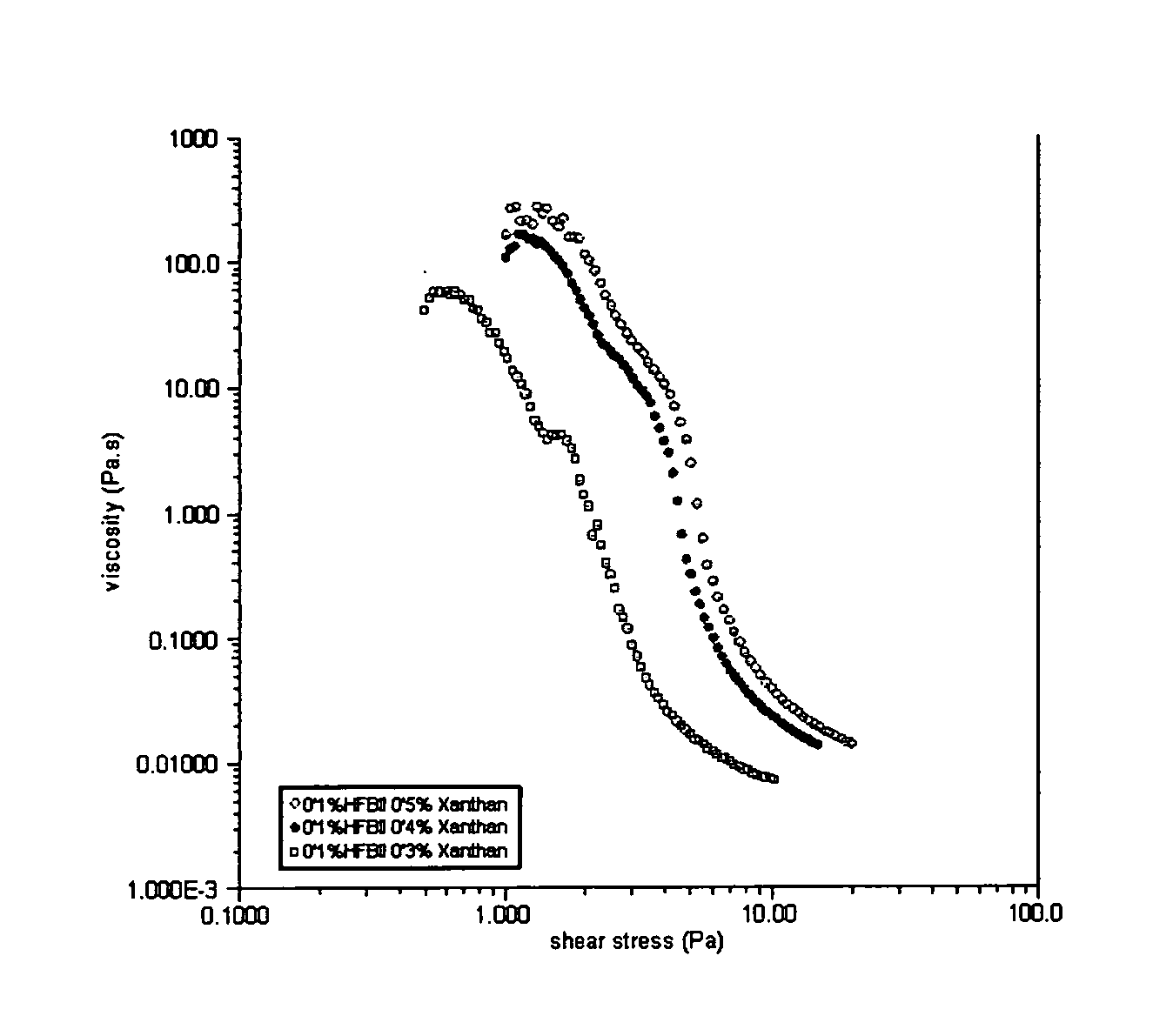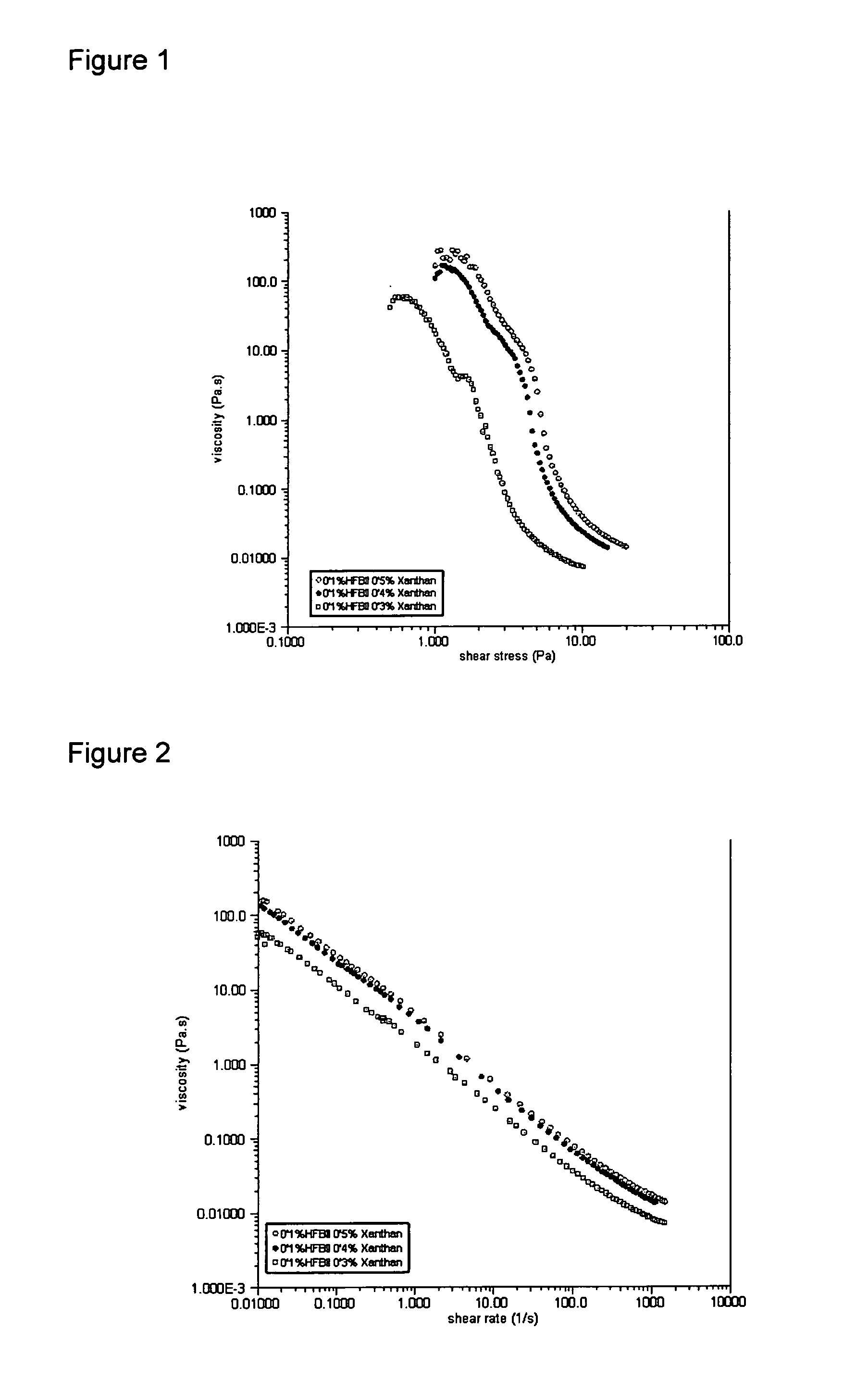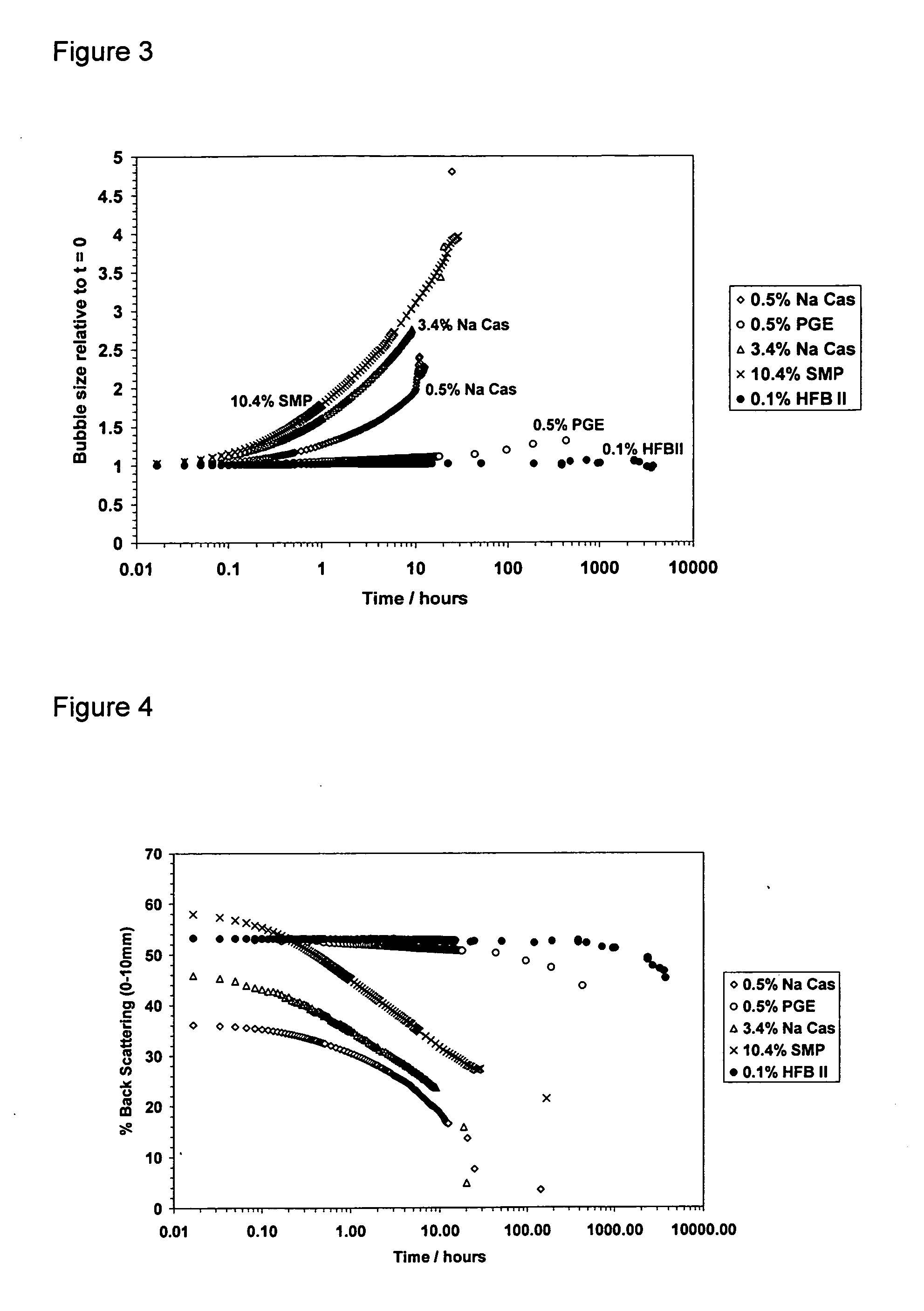Aerated products with reduced creaming
- Summary
- Abstract
- Description
- Claims
- Application Information
AI Technical Summary
Benefits of technology
Problems solved by technology
Method used
Image
Examples
example 1
Flowable Stable Foams with Reduced Creaming
Materials and Formulations
[0106] Examples of aerated chill products were prepared using 3 types of surface active protein (A to C) and a lipogel forming emulsifier (D):
[0107] A: Sodium Caseinate (Na Cas)
[0108] B: Skimmed Milk Powder (SMP)
[0109] C: Hydrophobin (HFBII) from Trichoderma reesei
[0110] D: Polyglycerol ester of saturated fatty acids (PGE)
[0111] Details of the materials used are summarised in Table 1 and the formulations from which each of the chill foam samples was prepared are shown in Table 2. Foams were prepared and stored at chill temperatures (5° C.). Their foam stability, with respect to bubbles size and creaming were monitored over time using the Turbiscan instrument.
TABLE 1Ingredients used with supplier informationIngredientCompositionSupplierSodium caseinate88-90% protein, 1.5%DMV International,fat, 6% moistureThe Netherlands.Skimmed milk powder33-36% protein, 0.8%United Milk, UK.fat, 3.7% moisturePolyglycerol e...
example 2
Aerated Chocolate Milkshake
[0141] An aerated chocolate-flavoured milk shake was prepared as follows. A commercially available milkshake (Frijj™ Thick Fresh Milkshake produced by Dairy Crest Ltd, Shropshire, UK) was purchased. This is an unaerated product and, according to the ingredient list, contained: skimmed milk, whole milk, sugar, modified maize starch, fat reduced cocoa powder, buttermilk powder and stabilisers (carrageenan and guar gum). Xanthan gum was slowly added to the milk shake with stirring to a concentration of 0.5 wt %. This was then mixed for 20 minutes to allow the xanthan gum to hydrate fully. A known volume of 0.5 wt. % hydrophobin solution was aerated to 400% overrun using a hand held aerolatte™ device. This was added to the milk shake to give an aerated milkshake product with 100% overrun, an overall hydrophobin concentration of 0.1 wt % and an overall xanthan concentration of about 0.41 wt %. The aerated milkshake product was then stored at 5° C. and its stab...
example 3
Aerated Fruit Smoothie
[0142] An aerated fruit smoothie was prepared using a Vie Shots™ drink, produced by Unilever UK as a fruit puree base. The Vie Shot™ contained: banana puree (28%), orange juice concentrate (26%), carrot juice concentrate (23%), pumpkin juice concentrate (14%), orange pulp (4%), lemon juice concentrate, acerola cherry concentrate (1.5%), and apple pectin. The pH was measured (at room temperature) to be 4.17. Xanthan gum was slowly added to the fruit puree with stirring to a concentration of 0.5 wt %. This was then mixed for 20 minutes to allow the xanthan gum to hydrate fully. A known volume of 0.5 wt. % hydrophobin solution was aerated to 400% overrun using a hand held aerolatte™ device. This was added to the fruit puree to give an aerated fruit smoothie product with approximately 100% overrun, an overall hydrophobin concentration of 0.1 wt % and an overall xanthan concentration of about 0.41 wt %. The aerated fruit smoothie product was then stored at 5° C. an...
PUM
 Login to View More
Login to View More Abstract
Description
Claims
Application Information
 Login to View More
Login to View More - R&D
- Intellectual Property
- Life Sciences
- Materials
- Tech Scout
- Unparalleled Data Quality
- Higher Quality Content
- 60% Fewer Hallucinations
Browse by: Latest US Patents, China's latest patents, Technical Efficacy Thesaurus, Application Domain, Technology Topic, Popular Technical Reports.
© 2025 PatSnap. All rights reserved.Legal|Privacy policy|Modern Slavery Act Transparency Statement|Sitemap|About US| Contact US: help@patsnap.com



